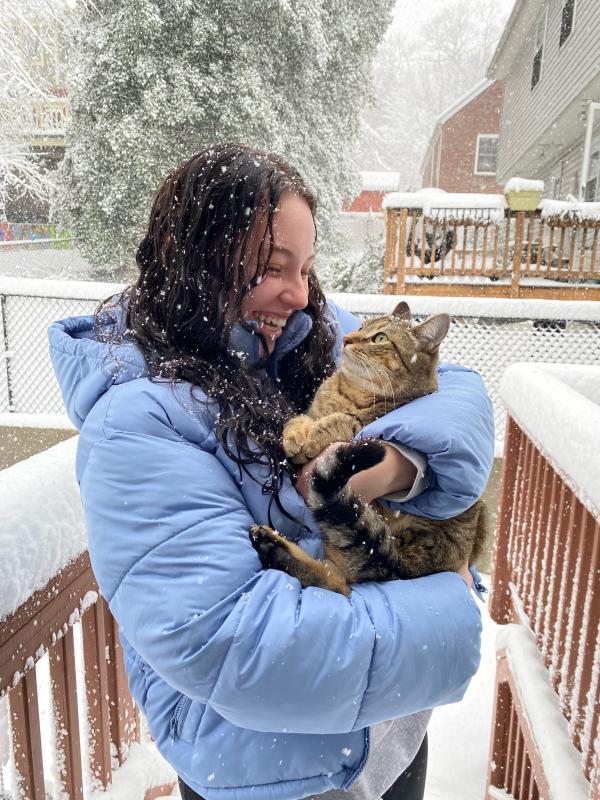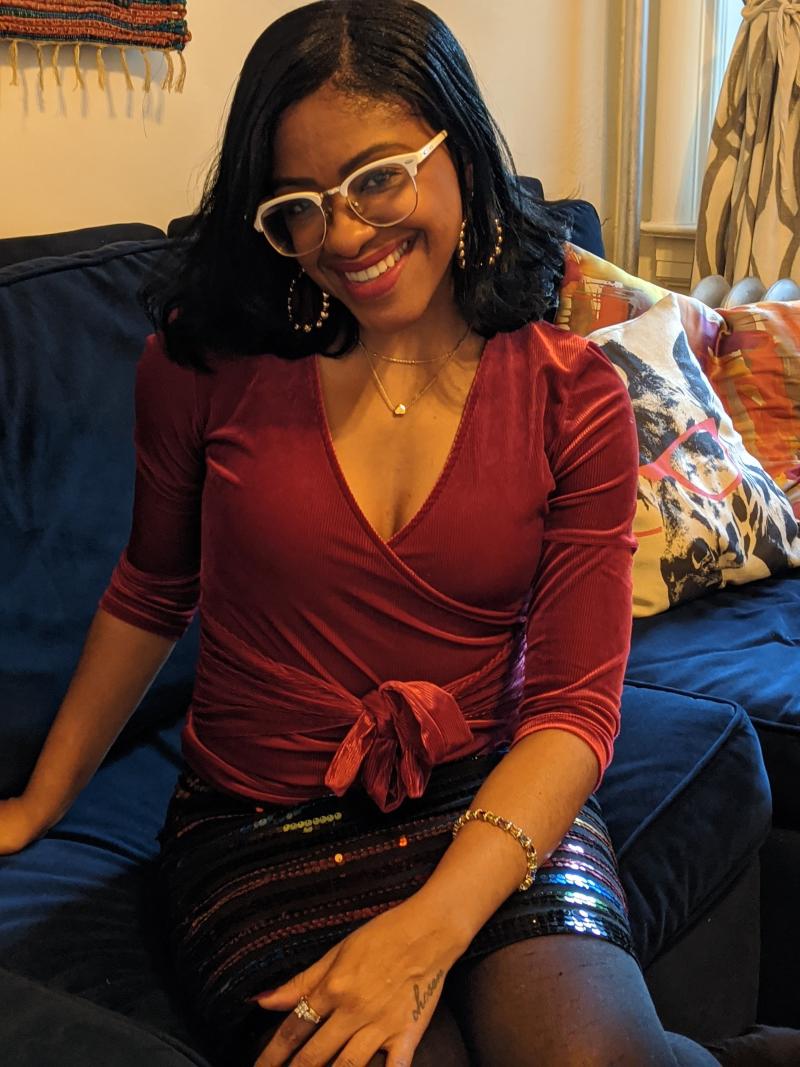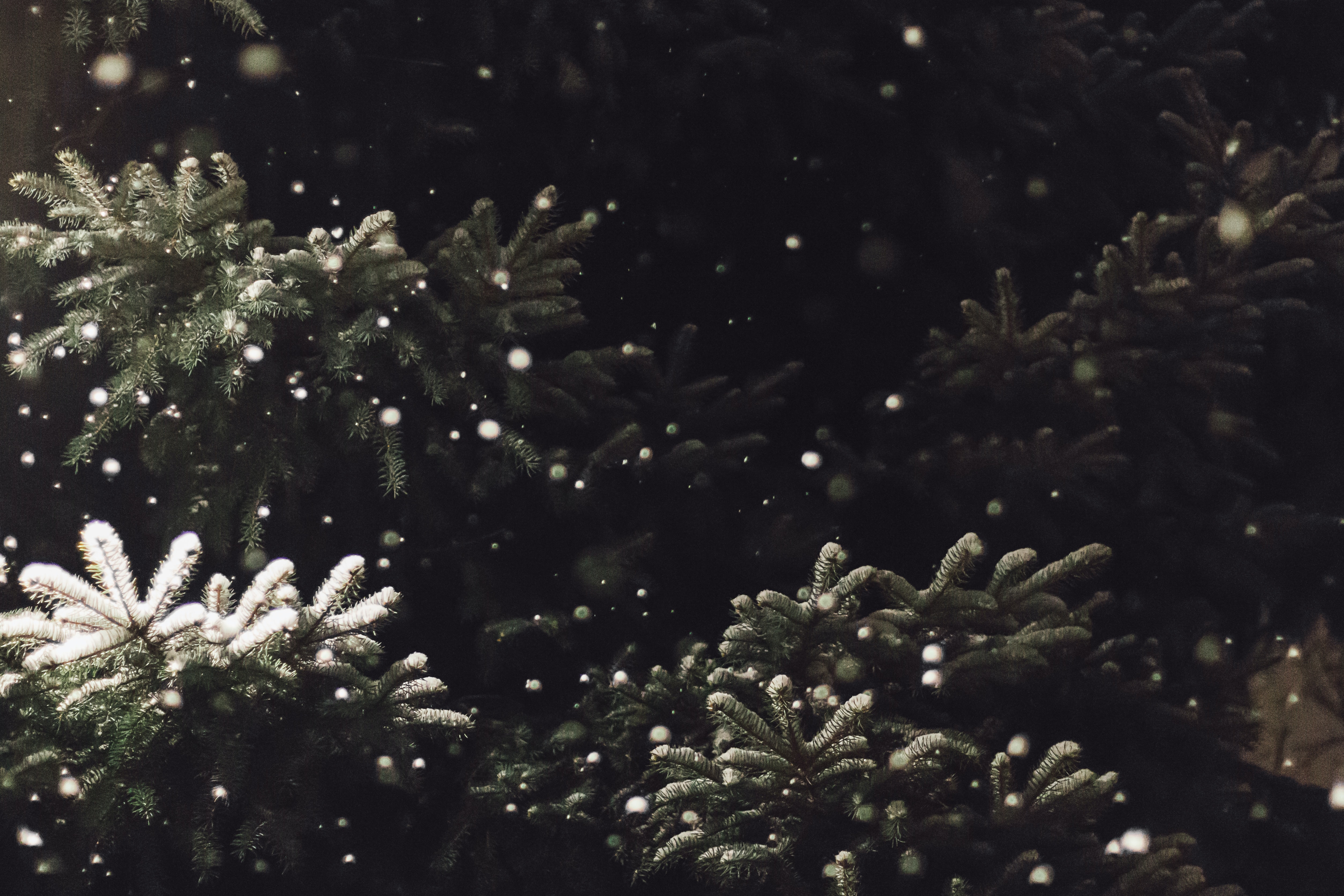December holidays bring to mind memories of childhood, traditions launched with old and new family gatherings and, for many, the comfort that comes with the meanings of Christmas, Hannukah and Kwanzaa. GW Today asked members of the university community—students, faculty and staff—to share their favorite December holiday memories and traditions. And here they are:
Johnny Vail, faculty affairs specialist in the Faculty Personnel Office
One holiday tradition for my family is our annual gingerbread house competition. Myself, my siblings and our significant others all have one hour to decorate our houses with the candy provided in the kit or candy we bring ourselves. We certainly get competitive and poke fun at each other while decorating—all in good spirits, of course. Afterward, our neighbors come and judge the houses. We usually have enough categories so everyone wins something—like Best Holiday Theme, Best Use of Candy or Most Creative. While it isn’t officially stated, everyone knows Best Overall is first place!
Neel Barge, a GWSB graduate student and a student technical support assistant in IT
I grew up along the western coast of India, in the state of Maharashtra, in a city called Thane, which is near Mumbai, the country’s financial capital. At school, there would be a day during the Christmas season when we would give gifts to each other. At home, we always got a plum cake at Christmastime, and we would have it together, the four of us—my father, mother, sister and me. Mostly, we would be traveling at that time of year, and wherever we went, the bakeries would have these cakes; sometimes they just called it Christmas cake. It has raisins and dried fruit, like a fruitcake. They don’t make them throughout the year, only during the holiday season. People made them with love. I would like to have a tree this year, and I hope to get something like a plum cake.
Layna Teitelbaum, sophomore political communications major in SMPA
The holidays are extra festive in the Teitelbaum household as we celebrate both Hanukkah and Christmas. While we carry on Hanukkah traditions with extended family, Christmas has become our holiday of new traditions. On Christmas Eve, my mom and I will cook eggplant parmesan, a labor of love, and we'll listen as she reads “Gift of the Magi.” The story reminds us to hold gratitude and appreciation for the time we have together. As the sun comes up on Christmas morning, we gather around the living room, our two cats in their Christmas sweaters, as my dad hands out gifts in a Santa hat.
Liesl Riddle, dean of the College of Professional Studies
Many GW memories are on my Christmas tree. Our 9/11 ornament reminds me of the impactful conversations in my classroom the next day as it was my first month of teaching at GW. Several ornaments were purchased on study abroad trips I led to Ethiopia and Turkey or on research trips around the world. The GW logo ornament was purchased the year I received my tenure. But my favorites are those from former students; it's a joy to remember them each year. Today, we will hang a new ornament, representing my new GW family in the College of Professional Studies.
Frances Alegria, junior neuroscience major in CCAS
The holiday tradition I look most forward to celebrating this year is Christmas caroling–Puerto Rican style. A Parranda, also called a Trulla navideña, is marked by singing traditional Puerto Rican aguinaldos, Christmas songs that emerged from boleros, tunas and salsa.
“¡Asalto!”
An uproar accompanied by numerous instruments echoes through the front door. Friends and families gather late in the evening–with instruments like güiros, maracas and pleneras– to sing well-known Puerto Rican Christmas songs such as:
“Traigo esta truya para que te levantes.
Traigo esta truya para que te levantes
¡Esta truya está caliente, esta truya está que arde!”
Once someone in the friend group surprises unsuspecting friends and neighbors and wakes them with their music, the homeowner must hint that they are prepared to accommodate unexpected guests in their living room. If so, energetic jingles will be sung, coquito–a traditional holiday drink–will be passed around as people rejoice and clap in unison.
Imani Cheers, associate professor in SMPA
My mother named me Imani in homage to the African American holiday Kwanzaa. Imani means "faith" in Kiswahili and is the seventh principle of the week-long celebration. African culture, music and food was an integral part of our upbringing, and in 1995 my family moved from the Washington, D.C., area to Johannesburg, South Africa. My mother was thrilled to take her young family to the motherland and relish in the traditions and principles of Kwanzaa in her everyday life. Umoja (unity); Kujichagulia (self-determination); Ujima (collective work and responsibility); Ujamaa (cooperative economics), Nia (purpose); Kuumba (creativity) and Imani (faith) are not only the principles of the celebration but ideals my mother cherished. It's an honor to continue passing those same values and morals to my son, Isaiah, as we embark on the first Kwanzaa this month with my mother as one of the ancestors. I am so grateful she left with me a legacy of a love for my culture and heritage.
Adena Kirstein, executive director of GW Hillel
While other holidays often demand more attention in our home, Chanukah is a quieter celebration. Yet as we’ve watched our family grow, I still treasure the feeling of the last night of the holiday. Each year, we try to take a picture of our kids in front of the fully lit menorah and only later, I will scroll through photos and see that I’ve inevitably missed my husband and me in the reflection of the window. There’s always so much in this messy, beautiful frame. There is the wonder of this world as seen through the eyes of our kids. There is the call to “publicize the miracle,” as we invite our neighbors to subtly join in the festivities and celebrate how proud we are to be Jews in America. And there is always gratitude—when we can pause, even if only for a moment, to appreciate the blessings in our lives.
Selase Deletsu, a postdoctoral fellow in SMHS
Christmas back in Ghana, apart from the religious aspect, signifies family time. Everyone goes back to their hometown and spends time with the whole family. In my culture, wrapped presents under Christmas trees are not that common. We did get presents, but there was no pomp and pageantry around it. So, unsurprisingly, my favorite memories of Christmas are of the family time. Before Christmas, my parents and we children all got together to make holiday decorations. We would cut up pieces of paper that stretched out into Christmas tree shapes, make and glue together colorful garlands and then put them up around the house along with Christmas lights. This is one of my favorite memories because we were all together, fully immersed in one activity, chit-chatting, making jokes and goofing around. And I hope to keep this tradition alive when I have my own family!
Michael Weeks, operations manager, Departments of History and of Classical and Near Eastern Languages and Civilizations
Holidays can be tough times for many, and yet holiday memories can be heartening and healing. I had not put up a Christmas tree for years. But in 2020, the combination of our shared social isolation and family losses convinced me that it was time to break that historical pattern and bring some needed light and color into my home and life. Years before, my late friend and I had an established tradition that our tree would be decorated primarily with bears and beads. (What after all brightens the dull darkness of December more than bears and beads?) I pulled our ornaments out of storage, picked up a small tree and had an afternoon of decorating and warm reminiscence. The tree went up last December, too. And I think it will for many years to come—with old memories and new.
Maranda Ward, assistant professor, SMHS
Anyone who knows me, knows I love the holidays. I am a festive person. Likely, it is because my Christmas Eve birthday was rarely fully celebrated as a child but instead was wrapped into Christmas travel and celebrations. So, I go all out for every other celebration with loved ones. One that I appreciate so dearly is our family’s celebration of the Kwanzaa season from Dec. 26 through Jan. 1 every year. Each day, we meet at a different family member's house to honor each Kwanzaa principle. As soon as they open the door, they greet us with, “Habari Gani?” or “What’s the news?” in Swahili. In good call-and-response, we proudly yell the Swahili-based principle of the day. My grandmother owns a Kwanzaa book that we each read from that describes the Ngoza Saba (the seven daily principles). To start, we open with prayer and a reading of the principle of the day. We then light one of the red, green or black candles on the kinara until all seven candles are lit by the final day. Unlike Christmas gifts, Kwanzaa gifts are principle-oriented. Journals were distributed one year when we talked about Nia, or purpose, so we could chronicle who we are and plan to become. Kwanzaa fosters family connectedness, pride in Black identity and a strong sense of history across the African diaspora. What better way to kick off each New Year?
Mary Buckley, associate professor of dance at the Corcoran School and a program coordinator for the Women’s Leadership Program
The Nativity creche display has always been the first sign of Christmas in our home. I grew up in a Catholic family, with six siblings, and the family creche was unpacked and assembled in early December on our fireplace mantle, sometimes less carefully than my mother intended, but we all valued this signal that we might start dreaming of Christmas celebrations with our extended family. On Christmas Eve, seven stockings were hung below the fireplace mantle and filled with small toys and candy. The creche and the stockings form a strong image for me of family and Christmas, and I continue the tradition with my family. The individual pieces are about 80 years old, and they are chipped and banged from wear and small hands, but I find these imperfections charming as they carry the residue of many joyful Christmas celebrations. Over the years, we added a few pieces, gifted from special friends but most of the set is old and much loved.
Lynn Westwater, professor of Italian, Department of Romance, German and Slavic Languages
When my mother was in good health, she traveled from Colorado to spend Christmas with us every year. She would join us for our Christmas Eve traditions: a candlelight service, a tour of the holiday lights, carols around the piano, cookies set aside for Santa and the reindeer. Our favorite Christmas memory of “Jammie” is the year she arrived late on Christmas Eve, after our three daughters were in bed. She stole into the living room early on Christmas morning and watched in delight as her granddaughters rushed downstairs to see what surprises Santa had left. The girls were so intent on their stockings that it took them minutes to notice the best treat of all: Jammie! Such holiday memories are especially meaningful to us this year, after Jammie’s passing in October. We will bake her Christmas bread again this year, savoring the traditions she left us.
Daniel Schwartz, professor and History Department chair
Our Hanukkah traditions are pretty much standard—eating latkes (potato pancakes) with applesauce or sour cream, singing Hanukkah songs (which don’t quite live up to Christmas carols), maybe the first night playing a game of dreidel and then losing interest because it’s so boring. I remember when I had just become a father for the first time two weeks earlier, and it was the first night of Hanukkah. I was holding my son Max (now 18) in my arms as my wife and I recited the blessings and lit the candles. We lived in a high-rise apartment in the Riverdale section of the Bronx that looked out onto the Hudson River. I can still see the reflection in the window of the flickering lights and of my infant son in my arms. It’s a poignant memory.
Dayna Bowen Matthew, dean of GW Law
Do you know that feeling of seeing candlelight burn through the darkness, through a big fat tear? My favorite holiday tradition is trying to recreate that feeling since I first experienced it in sixth grade. I was the new public-school kid from across town, and Erin Martin was my new friend at our fancy private school. She invited me to join her family for Christmas Eve in the yard of their lower Manhattan church. So instead of attending service in Harlem at the opposite end of Manhattan, I stood with Erin and a crowd of strangers holding candles. It was nighttime. It was cold. The faces, traditions and music were totally unfamiliar. And it was magic.
Every year I try to attend a candlelight service with a new friend. Whether I listen to the Shehecheyanu on the first night of Hanukkah, attend Midnight Mass where the Christmastide liturgy is read in nine different languages, or honor my ancestors through storytelling during Kwanzaa—seeing candlelight through that same big fat tear gets me every time. And my hope is renewed.

















